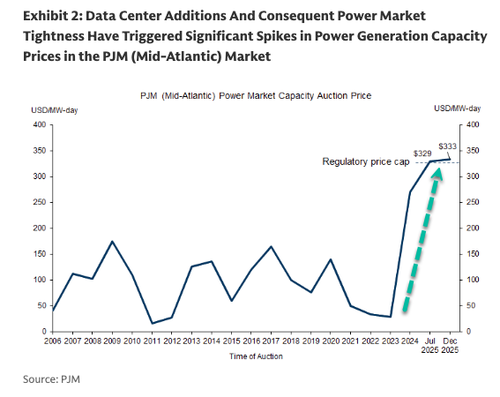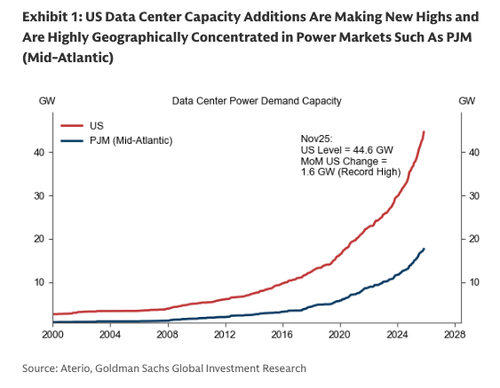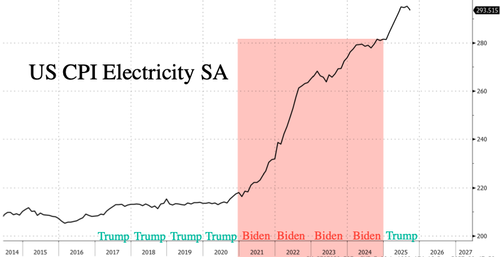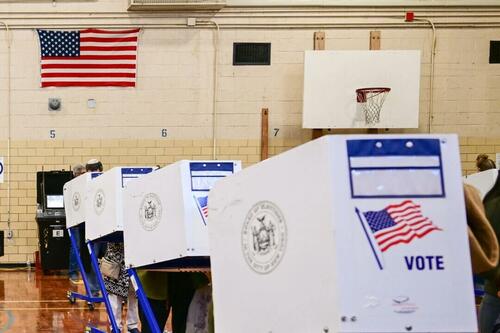Apocalyptic Environmentalism Collides With Data Center Boom, Fuels Sky-High Mid-Atlantic Power Prices
A combination of "apocalyptic environmentalism" and an explosion in data center power demand has left power markets in the Mid-Atlantic heavily strained, triggering a surge in power bills that is roiling working-poor families, middle-income households, and mom-and-pop businesses.
Democratic kings, operating under one-party rule in crisis-ridden Maryland, spent the week pushing ahead with a slavery reparations study instead of tackling the power bill crisis that is inflicting tremendous financial pain on working poor households across the central part of the state.
Maryland's "apocalyptic environmentalism" - something we warned about 17 months ago - has helped create a fragile power grid that consumes roughly 40% more electricity than it generates, leaving consumers exposed to soaring power costs amid the rise of data centers being hooked up to the grid.
Left-wing lawmakers in Annapolis, fixated on a green globalist framework, ignored basic reliability planning for years. Utilities such as Exelon are now attempting to correct the power crisis by building new power plants, something that should've happened years ago. But the effort comes too late to close the power supply gap and to prevent skyrocketing regional power prices.
The latest power capacity auction run by PJM Interconnection, which operates the 13-state grid serving nearly one-fifth of Americans, particularly across the Mid-Atlantic, shows how sharply power generation capacity prices have exploded in recent years. Payments to generators active on the grid have surged to about $333.44 per megawatt day, up from a sub-$50 level in 2023.
Much of America's data center power demand is coming from the Mid-Atlantic region, specifically from Data Center Alley in Northern Virginia and parts of Maryland.
"The amount of pressure on PJM is enormous," Daniel Palken, director of infrastructure for energy and permitting at philanthropy Arnold Ventures, told Bloomberg.
Fixing Maryland's power grid could have been done years ago and under the Biden-Harris admin, but Mid-Atlantic Democrats instead focused on implementing a globalist agenda centered on woke politics, illegal aliens, and green policies that stripped the grid of stable fossil fuel generation.
Now, Democrats in Maryland have spent this week more focused on slavery reparations than on power bills. This is what happens when far-left activists take control: their intent is not to fix problems but to advance ideology, regardless of the economic damage.
We've outlined the competing narratives at play from both political parties.
Let's not forget the power bill crisis is mainly happening in Democrat-run states...
And as we've noted, Nvidia-backed startup Starcloud has entered the picture that will use SpaceX's Starship rocket to blast data centers into low-Earth orbit to "bypass Earth-Based constriants."
Tyler Durden Thu, 12/18/2025 - 14:40





Recent comments